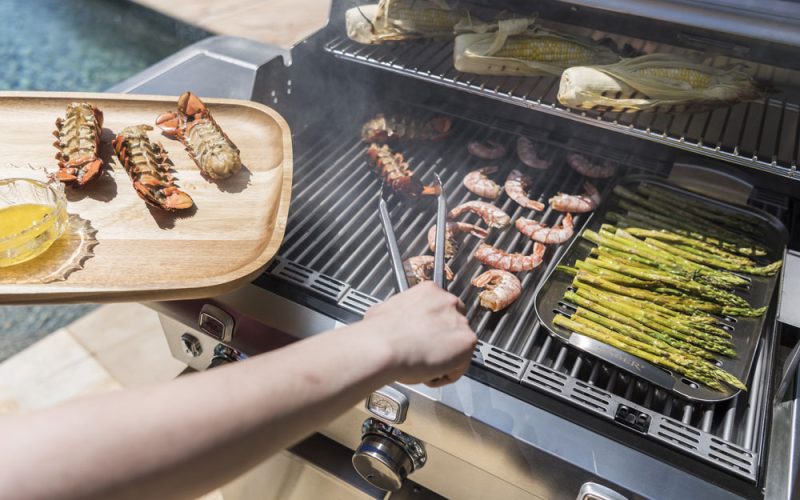What is the science behind Saber Grills Infrared Cooking
Technology?
That great-looking piece of meat you’re about to cook is surrounded by a layer of
air and water molecules that don’t move around very much. This boundary layer
forms a protective barrier, locking in the meat’s natural moisture. Let’s Dive in and check Saber Infrared Grills vs. Gas Grills The hot air in a
convective grill evaporates that protective layer and dries out the meat as it cooks.
But radiant (infrared) heat works differently. The essence of Saber Grills Infrared
Cooking system is a stainless steel emitter with a unique “peaks and valleys”
structure placed between the gas-powered burner and the cooking grate. As the
burner heats the emitter, radiant heat is created in the form of invisible wave
energy. Instead of heating the air, Saber Infrared Gas Grills it transfers directly to the food, where it is
absorbed without disturbing the boundary layer. This preserves the moisture in the
food instead of drying it out.
No More Flare-Ups
With traditional convective and ceramic IR grills, flare-ups occur frequently as
grease ignites, charring food and causing dramatic temperature fluctuations.
SABER’s patented IR system eliminates this problem. When grease drops onto the
SABER IR emitter, the peaks and valleys create an oxygen-free zone that won’t
allow flames to erupt. Instead, grease is vaporized, adding to the natural flavor of
the meat and making cleanup much easier.
Without flare-ups, SABER’s IR system creates controlled even heat across the
entire grate. No more hot or cold spots to frustrate the cook.
Efficient, Even Heat
SABER grills cook food more quickly with less energy. That’s because IR is more
efficient at what engineers call “coupling to the food.” IR directly heats the meat on
the grate, not the spaces in between the meat. In a convective grill, the hot air
takes the path of least resistance and flows around and between the food on the
grate. So it takes longer to cook, provides uneven heat and consumes more gas.
By contrast, SABER delivers high performance with fewer BTUs so you use 30%
less gas and need less frequent fill-ups.
Traditional Convective Gas Grill
- Convective airflow dries out food while cooking
2. Hot and Cold spots—uneven cooking temperatures across the cooking surface
3. Uncontrolled and high volume airflow increases flare-up opportunities
4. Significant heat fluctuation occurs when lid is opened and closed
5. Maintenance requirements are increase due to burners and burner tents being
exposed to grease and other liquids.
Ceramic Infrared Grill
- Super high temperatures are more likely to char food than thoroughly cook
2. Narrow and very difficult to control range of temperatures
3. Ports on ceramic infrared burners have a tendency to become clogged with food
4. debris and grease causing poor cooking performance and potential grease fires.
5. Ceramic emitters are susceptible to cracking due to thermal shock
6. Uncontrolled and high volume airflow increases flare-up opportunities
7. Maintenance requirements are increased due to ceramic emitters exposure to
grease and other fluids.
Now, Let’s Dive in and know What Makes a Saber Infrared Gas Grill?









